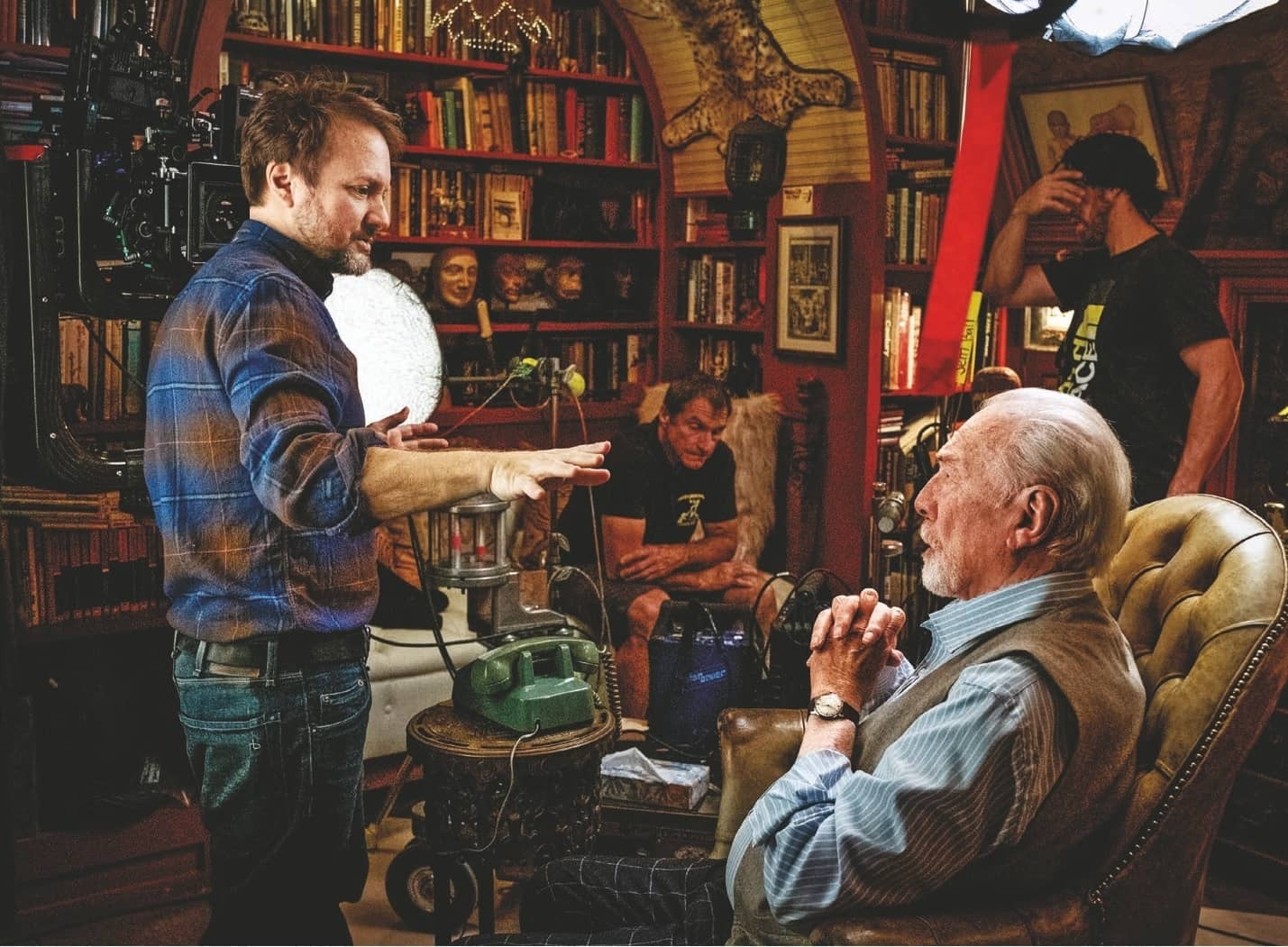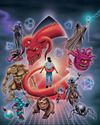
The madcap drawing-room whodunit from writer-director Rian Johnson, Knives Out, is notable first and foremost for its extreme improbability. Not in its storyline— though the plot is reliably packed with hairpin turns and reversals—but rather for the unlikelihood of the film’s existing at all. It’s an original take on an anachronism: the star-studded sleuth film. When Johnson finished a first draft of Knives, an idea that had been germinating for a decade, and showed it to some of his friends, they were skeptical. “A few reactions were ‘We like this kind of movie, but why do you want to do this?’ That did give me pause,” he says. “But I felt like I knew deep down inside why I wanted to do it.”
Johnson’s new film isn’t the only recent whodunit—Kenneth Branagh cast himself as Hercule Poirot in a 2017 version of Murder on the Orient Express, and it grossed over $300 million worldwide. But Orient Express is a famous piece of intellectual property from a best-selling author and had been previously adapted for the screen, TV, radio, and the stage. Knives Out is the opposite. It’s original, offbeat, carefully observed, aimed squarely at adults, and, while funny, not at all a send-up like, say, Murder by Death. It’s also overtly political in content, cleverly investigating our divisive current moment. In short, Knives Out is the kind of film that exhibits “the unifying vision of an individual artist,” as Martin Scorsese put it in a recent New York Times op-ed about the kinds of movies he feels are disappearing from Hollywood. What modern Hollywood wants instead are franchise films like Star Wars: The Last Jedi—as it happens, the last film Johnson directed, which goes a long way toward explaining how he managed to marshal the forces to get this idiosyncratic movie made.
Denne historien er fra November 11-24, 2019-utgaven av New York magazine.
Start din 7-dagers gratis prøveperiode på Magzter GOLD for å få tilgang til tusenvis av utvalgte premiumhistorier og 9000+ magasiner og aviser.
Allerede abonnent ? Logg på
Denne historien er fra November 11-24, 2019-utgaven av New York magazine.
Start din 7-dagers gratis prøveperiode på Magzter GOLD for å få tilgang til tusenvis av utvalgte premiumhistorier og 9000+ magasiner og aviser.
Allerede abonnent? Logg på

LIFE AS A MILLENNIAL STAGE MOM
A journey into the CUTTHROAT and ADORABLE world of professional CHILD ACTORS.

THE NEXT DRUG EPIDEMIC IS BLUE RASPBERRY FLAVORED
When the Amor brothers started selling tanks of flavored nitrous oxide at their chain of head shops, they didn't realize their brand would become synonymous with the country's burgeoning addiction to gas.

Two Texans in Williamsburg
David Nuss and Sarah Martin-Nuss tried to decorate their house on their own— until they realized they needed help: Like, how do we not just go to Pottery Barn?”

ADRIEN BRODY FOUND THE PART
The Brutalist is the best, most personal work he's done since The Pianist.

Art, Basil
Manuela is a farm-to-table gallery for hungry collectors.

'Sometimes a Single Word Is Enough to Open a Door'
How George C. Wolfein collaboration with Audra McDonald-subtly, indelibly reimagined musical theater's most domineering stage mother.

Rolling the Dice on Bird Flu
Denial, resilience, déjà vu.

The Most Dangerous Game
Fifty years on, Dungeons & Dragons has only grown more popular. But it continues to be misunderstood.

88 MINUTES WITH...Andy Kim
The new senator from New Jersey has vowed to shake up the political Establishment, a difficult task in Trump's Washington.

Apex Stomps In
The $44.6 million mega-Stegosaurus goes on view (for a while) at the American Museum of Natural History.